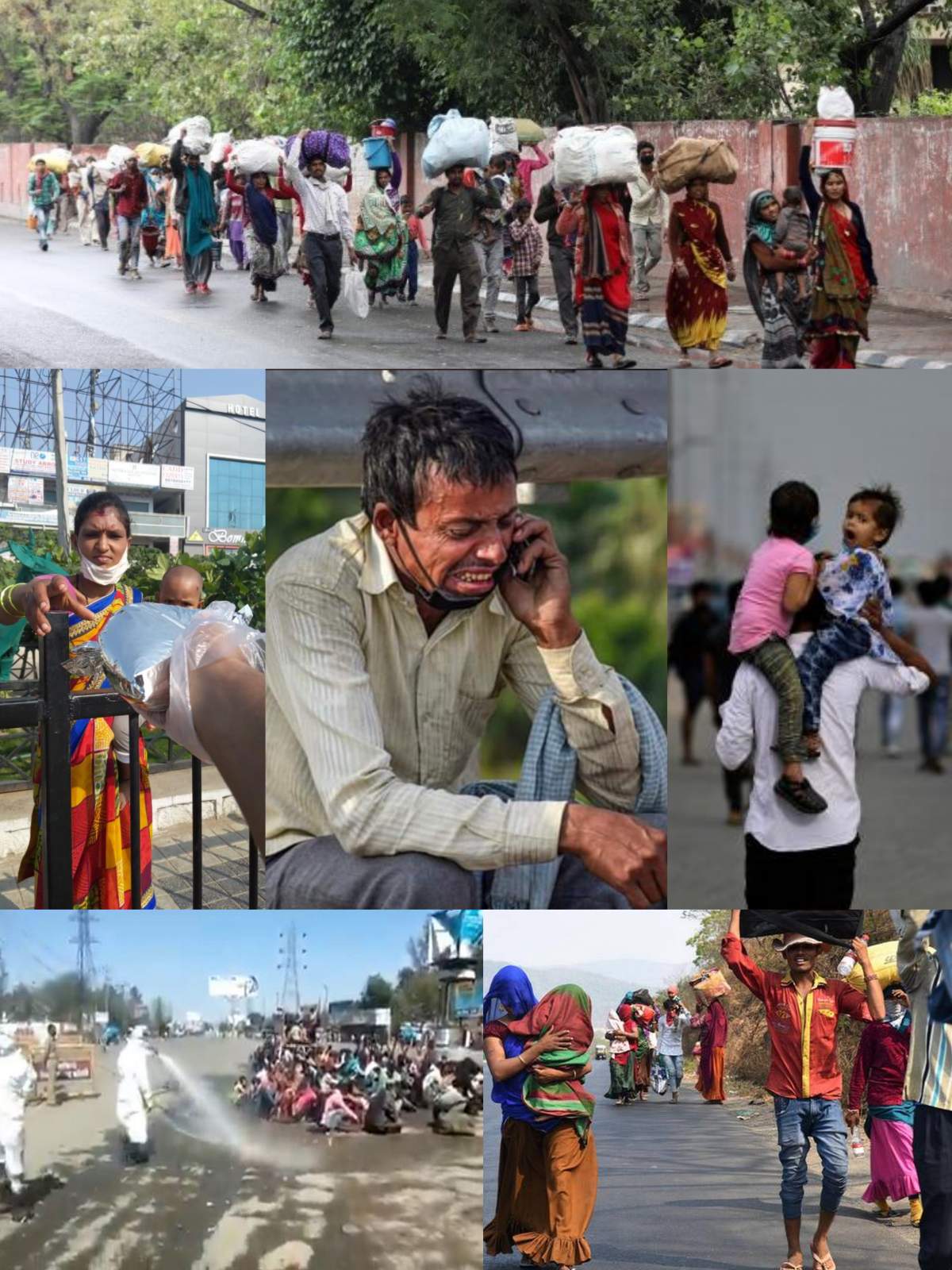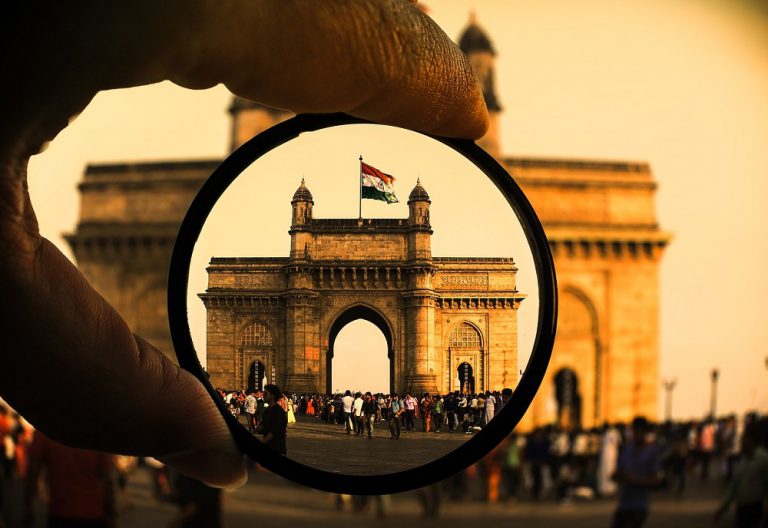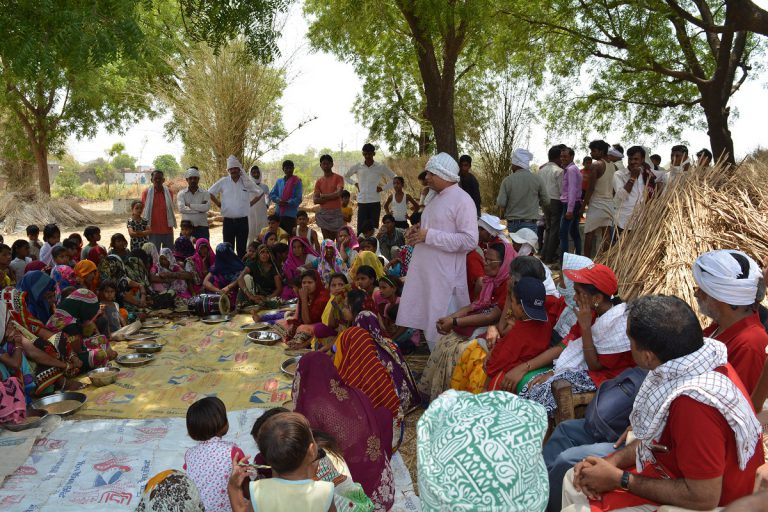India: No place for vulnerable migrants

Soumya is a passionate generation equality activist, an ardent reader and writer. She also posts on her Instagram blog @sapien.approach.

[responsivevoice_button voice=”US English Female” buttontext=”Read out this Theel for me”]
A migrant worker, his seven- month pregnant wife, and other family members walk 500 kilometers from Mumbai to their home in Buldhana. It was a struggle on their way home carrying their children and belongings as they walked day and night. They had to walk under the scorching sun, with no money, begging for water, and survived by eating food given by the locals or some good Samaritans. And by resting on footpaths and under the bridges, they reached their hometown. This is just one of the many stories of migrant workers who struggled to reach their homes.
The existing lockdown has been affecting migrant workers the most than others. While many of us are finding it difficult to stay at home, practice social distancing, and work from home, the migrant workers are struggling for food, shelter, health, and other essential needs. With no alternatives, they have been walking hundreds of miles, and some use cycles and rickshaws to reach their homes.
Migrants are the people who usually travel to affluent cities to find better opportunities to achieve upward mobility. These migrants generally get employed as laborers and send the hard-earned money to their families back home. Many of them end up working in the informal/ unorganized sectors due to which they are unregistered and are generally prone to exploitation. These migrants can be considered the backbone of the city’s economy, working as construction workers, masons, barbers, and others. Internal migrants who include inter-state and intra-state migrants constitute about 65 million of the country’s total population. Of this, the lockdown has affected nearly 40 million, and migrants’ mass departure is predominantly of the inter-state ones.
It was on March 24th that the migrant workers started walking back to their homes immediately after the announcement of the lockdown across the country. As per reports, as many as 189 people died traveling to their homes and met with accidents. Moreover, this may not include the actual numbers, as most of them are not reported, especially in the interiors. One of the incidents that were reported included a 12-year old who died after walking around 100 kilometers from Telangana to Chhattisgarh. There were also instances of some of these migrants being robbed on the way. The most recent is a ghastly accident wherein 16 migrant workers were asleep on a rail track near the Madhya Pradesh border when a goods train crushed them to death. The migrant workers reportedly walked for 45 kilometers to reach their home and slept on the track to avoid thrashing by the police.
Some migrants in other areas protested in anger and attacked their respective employers and cops. In one instance, hundreds of them staged a protest in Kerala against the country-wide lockdown. Two incidents occurred where migrants protested in Hyderabad, one where the construction workers attacked the employers for not paying them salaries. In another case in Surat, migrants pelted stones at an office and also at the policemen who tried to restrain the situation.
Returning to their homes was also not a relief to some of these migrant workers as they were seen as the carriers of the virus. When few of the migrants returned to their homes in Bareilly in Uttar Pradesh, they were made to squat on the ground, and the officials of the medical and fire departments sprayed disinfectant in a proposed “chemical solution.”
Due to the increased turmoil across the country, weeks after the lockdown, the inter-state movement of migrants was allowed through a vague order by the central government. This left the host states and the home states confused with no systematized agreements on how the travelers would be tested and quarantined with limited resources. The limited resources provided by the states led to overly packed buses and bus-stops, which have eventually increased the number of cases in various states. For instance, the number of coronavirus cases has increased in Assam due to the inflow of migrants from Ajmer, Rajasthan, which was declared a red zone. Some of the host states have been eager to send the migrants home to relieve themselves from the pressure of new cases, while some of the home states have been reluctant to allow them as they might contribute to new cases.
If one looks at the economy, India’s earnings from internal migrants are at least 6% of the Gross Domestic Product (GDP), which is around USD $170 billion annually. This is more than what the government spends on the health and education sectors together. Isn’t it a tragedy that the governments and we as a society have been failing the most industrious people vulnerable whom we are dependent on in a way or the other?
In the latest development, the Indian Railways geared up and announced a run of 300 special trains apart from the previous claim of 364 trains for the migrant workers to reach their homes. The migrants also face challenges in terms of registration processes for a train journey between the host states and the home states. Even after the Minister of Railways asked the states to evacuate the stranded migrants to their homes, states like Karnataka and Tamil Nadu have refused to act. Karnataka, for instance, refused because it wants the labor to restart the economy and hence would not facilitate migrants’ travel. On the other hand, Tamil Nadu is still in the process of registration of migrants who want to leave.
Further, the transportation and movement of people in large numbers can put the country under the risk of contagion and an increase in the number of cases. It is essential to realize that the lockdown is a reality check in terms of policies and provisions of social welfare and security to the most vulnerable. These highlight the reality of inequality and poverty in our tinted lens of modern times. Now that the migrants are returning to their homes, the first thing that may affect their health is not only of coronavirus but also due to lack of immunization, maternity, and other health services. This also shows the effects on stigmatization and mistreatment at various levels.
In this scenario, governments have to test the returning migrants and quarantine them effectively. It is also necessary for them to take steps to effectively manage the welfare schemes and make sure that the benefits reach the vulnerable and the poor. It is tragic that these vulnerable migrants who are crucial for economic growth, and are the reason for industries to run, have no place in the country at this time of crisis.
Featured Image Credits: Collage of several internet sources








Well articulated.
Good work ?
Thank you so much
??
Thank you
?????
Thank you.